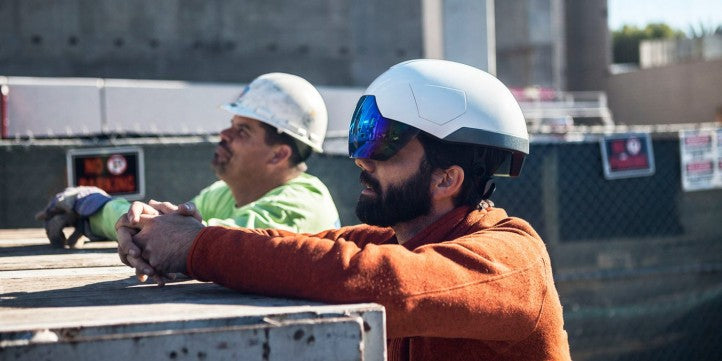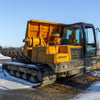This Is How Workwear Will Look In 10 Years Time

This is how workwear will look in 10 years time
Thanks to technological advancements and increased demand, workwear is evolving fast! New designs, better fabrics, and greater awareness mean workwear, now more than ever, is better suited to the demands of the industry it’s designed to protect.
If we take even just a small step back, we can see that over the last few decades, workwear has changed enormously! And, what’s more, this rapid change is only the start.
In this post, we will aim to explore what workwear of the future will look like.
Utilising digital technology
One of the biggest, if not the biggest, changes we are likely to see will relate to the inclusion of wearable technology.
Workwear, like the trend seen in civilian wear, will incorporate new technology directly into the fabric of the clothing.
With built-in wearable technology, human resource managers will be able to monitor employee movements, vital signs, key locations, and react instantly when situations arise.
For example, imagine a jacket that features a built-in camera, GPS, accelerometer, and gyroscope, all cleverly and discreetly woven directly into the fabric. If a wearer falls and is unable to call for help the jacket will instantly alert a control room showing live images of the worker, data on how and perhaps why they fell, as well as the exact location allowing a quick reaction extraction team to be deployed to rescue the wearer and mitigate any further accidents.
Or how about a hard hat where the visor could deliver augmented reality (think Ironman’s heads-up display) that will allow exact schematics to be virtually placed over the physical object. With augmented reality the possibilities are endless and, what’s more, these futuristic innovations aren’t actually the future, as augmented reality is available today on a smartphone!
It’s my belief that utilising technology in this way will likely cause a revolution, the likes that haven’t been seen since the start of the information age. Granted its inclusion in workwear will be expensive but the innovation exists, and it’s very exciting!
Crossing over into fashion
Workwear has rarely been considered to be trendy or fashionable, which seems surprising when considering the origin of denim jeans.
Times are, however, changing. This year alone we’ve seen workwear style ski clothing, adorned by celebrities such as Jay Z, and many iterations of hi-vis clothing spotted on high-profile catwalks throughout Europe.
This adoption confirms a shift in thinking with regards to the physical appeal of workwear. No longer is workwear viewed as a requirement enforced by an employer, but it is beginning to be seen as a high street and designer fashion trend. It’s a trend that is likely to continue and grow as workers demand better, more fashionable and functional garments in line with their everyday civilian ware. In a decade’s time, it’s possible that your workwear is far more likely to reflect and perhaps lead wider fashion trends.
Advanced fabrics
There are already many inherent or otherwise technical fabrics designed to resist common workplace hazards, such as chemical splash, arc protection, and offer resistance to fire (FR). Over the next ten years expect to see new and innovative fabrics designed to provide a broader range of resistances without hindering performance or durability.
One of the most significant challenges facing workwear manufactures is the development of durable, lightweight fabrics that offer high levels of durability and greater climate control while providing pivotal protective features designed to ensure wearer safety. Innovations in textile technologies will see softer, lighter, and more flexible fabrics become more widespread.
As previously mentioned we are also likely to see high demand for more innovative fabrics that can incorporate digital technology as part of an inherent feature of the fabric.
As industry’s transition away from traditional labour intense manufacturing, thanks to the advancements in artificial intelligence (AI) and robotic technologies, new roles and new hazards will affect the labour force and workplace. The challenge for fabric and workwear manufactures will be to keep pace with these industries and ensure the latest and safest fabrics are incorporated into innovated and advanced workwear.
Innovation for comfort
In years gone by the comfort of workwear was an afterthought when it came to workwear and PPE but that’s changing. It’s a core factor that can help improve worker satisfaction when completing jobs. Clothes that are designed with comfort in mind can actually enhance job performance too, as employees won’t be hindered by bulky, restrictive garments when carrying out routine tasks.
This article has only just begun to scratch the surface of the future of workwear, but it’s safe to say wearable technology will play a vital part in the years to come. Workwear has come an awfully long way in the last ten years, and one does not expect this advancement to slow any time soon.





